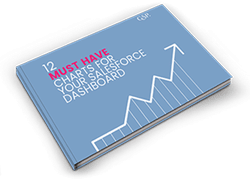The Power of Contact Heat Maps In Sales & Account Planning
See how Contact Heat Maps power smarter sales relationships, and how to use them.
Last updated August 27, 2025
At A Glance
In large sales opportunities, it's not always easy to keep track of key stakeholders. There are often multiple voices shaping the decision, and working out where to focus your time can be a challenge. A Contact Heat Map helps brings clarity by laying everything out in a simple, visual format, showing at a glance who holds influence, who's supportive, and where the biggest risks may be.
The GSP Account Planning app makes the process of building these contact heat maps in salesforce effortless. With intuitive drag and drop features, five colour-coded categories, and the ability to use every piece of contact data, it helps sales teams focus on the relationships that matter the most and move deals forward.
What Is A Contact Heat Map?
A Contact Heat Map is a visual tool that helps sales and account management teams assess their relationships with decision-makers and influencers in a customer organization. It maps influence and relationship strength, clearly showing who supports your deals and where engagement is needed.
Let's illustrate that with an example.
Contact Heat Map Example
Here's an example of a Contact Heat Map created in Salesforce using our Account Planning app in Salesforce. You can use PowerPoint or Excel if you prefer.
You can see there are two critical dimensions in the heat map.
- Likelihood To Recommend.
- Influence.
The framework means we can build a complete picture of the role played by various stakeholders in the customer organization and the extent to which each person is positively disposed towards you.
We'll explain in more detail how the Contact Heat Map works and what the colors mean, but for now, let's evaluate why we should use one.
Why Use A Contact Heat Map?
A Contact Heat Map helps you:
- Identify key stakeholders in the buying process.
- Assess relationship strength and influence levels.
- Surface assumptions that can be challenged and validated.
- Prioritize engagement to improve deal and account plan success.
- Guide account strategy for better customer management.
Let's take a look.
Identify key stakeholders
Gartner tells us that between 6 and 10 people are involved in the typical B2B buying process.
Your experience bears this out, I imagine. Yet, significantly, fewer stakeholders are usually associated with key account plans and contact roles on opportunities.
Fortunately, the visual nature of a Contact Heat Map makes it an excellent tool for reviewing all the contacts linked to an account and spotting essential stakeholders who might be missing.
In addition, you can link contacts from other accounts when building a Contact Heat Map in Salesforce using our Account Planning app.
Assess relationship strength
Identifying all the stakeholders is one thing, but that's only part of the process. We still need to assess and quantify the strength of our relationships with each person.
Too often, we take a broad-brush approach to assessing relationship strength ("we have inadequate relationships with the C-suite", for example). However, an essential benefit of Contact Heat Maps is enabling a more precise, action-oriented method of quantifying relationship strength with each stakeholder.
The Contact Heat Map means we can build a segmented, targeted approach to managing stakeholder relationships.
Surface assumptions about stakeholders
We all know that relying solely on our perceptions and understanding of any situation is dangerous.
Unfortunately, we often fail to validate our assumptions with peers, colleagues and managers when identifying and tracking stakeholder relationships in account planning and sales processes.
The Contact Heat Maps helps you solve this problem. That's because each Contact Heat Map allows us to quickly and easily communicate our thinking to others by providing an easy-to-grasp picture of stakeholder influence and relationship strength.
Prioritize engagement
You're ready to prioritize action and engagement once you identify all the stakeholders and quantify the relationships.
The colors on the heat map help you do this. The most urgent relationships that need action are highlighted in red, making them easy to see.
We can quickly see all the other relationships in our network and prioritize engagement with all stakeholders.
Guide Account Strategy
Creating a Contact Heat Map during your account planning process significantly improves the quality of the plan's objectives and increases the likelihood of achieving successful outcomes.
Let's take an example.
You might have seen account plans with objectives like the one below.
"Build and strengthen relationships with the C-suite executive team by December 30."
However, is that a business objective for which you can define and prioritize specific actions and track the outcome? I'd say not really.
Compare it to the following key account plan objective.
"By October 31, secure an email from Sarah Jones (VP of IT) to her team recommending the initiation of a proof of concept for our solution, demonstrating her shift from a mildly negative stance to a supportive position."
You can see the difference. The Contact Heat Map enables us to define Sarah as a key player in the decision-making process and quantify the shift we aim to achieve in her attitude towards us.
In other words, the Contact Heat Map is a critical enabler of effective stakeholder relationship management because it allows us to define and track specific, executable objectives and actions.
How to Create Contact Heat Maps in Salesforce
Your salespeople and account managers can build heat maps using PowerPoint, Excel or any other tool. You can attach these to Accounts using the Add Files function.
Nevertheless, it's a cumbersome approach that doesn't utilize all the contact data you already have in Salesforce. It also means you can't report on the results or make it easy to view and share the information.
In contrast, the GSP Account Planning app is an excellent choice for building Contact Heat Maps in Salesforce.
Here's how it works.
Click the Manage Account Plan button to get started.
You can see there are two critical dimensions. On the vertical axis, we have Likelihood To Recommend.
We have six categories in Likelihood To Recommend by default, but you can customize the values in our app to meet your needs. By default, we define the Level of Influence as:
- Will Recommend You
- Supporter of Yours
- Interested in You
- Sees You Same As Everyone Else
- Mildly Negative
- Will Recommend Competition.
The horizontal axis measures the Level of Influence.
By default, we use the following categories, although again, you can customize these. The six default categories are:
- Hardly Influences Decisions
- Influences Decisions
- Strong Influencer
- Minor Decision Maker
- A Decision Maker
- Only Decision Maker
Drag and Drop Contacts
The right side automatically lists all the Contacts linked to the Account. You can also search for contacts associated with other Accounts.
Salespeople and account managers drag and drop Contacts onto the heat map.
This feature makes building a comprehensive stakeholder heat map quick and easy.
Heat Map Colors
The colors on the heat map help you identify and prioritize where you need to take action to engage with stakeholders.
The heat map has five colors, with the number of people within each category summarized at the top.
There are five colors, as follows.
- Red (Severe Risk). The Contact has significant decision-making authority but a negative perception of your business or solutions.
- Orange (At Risk). The person plays a significant role and has a negative attitude towards you.
- Yellow (Needs Work). The person has a negative perception of your organization but plays only a minor role, or they have a mildly positive perception and a more significant influence in the buying process.
- Light Green (Stable). The person is positively disposed to you and may influence decisions.
- Green (Excellent). This person is a strong supporter and may significantly influence decision-making.
You can also easily see the people already on the heat map and their status colour.
The Contact Heat Map is only one GSP Account Planning app feature. Here are some things you can do next to learn more.
What To Do Next
Three steps you can take today are:
- Ask for a walkthrough of the GSP Account Planning app. We'll explain the app in the context of your business and answer your questions. Use our Contact Us form to get in touch. We'd love to hear from you.
- Visit the Account Planning AppExchange Listing. You can take a test drive, initiate a free trial, read reviews, and watch an overview video.
- Read our other Account Planning blog posts. For example, try this one:
How To Build Powerful Account Plans in Salesforce.
Now, over to you.













